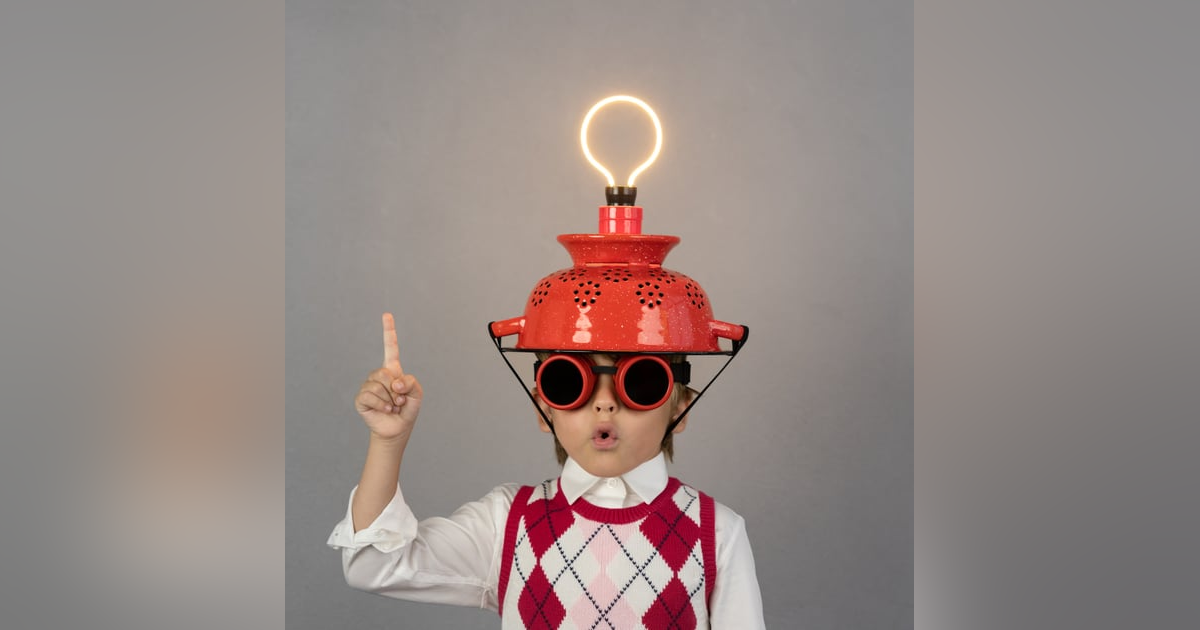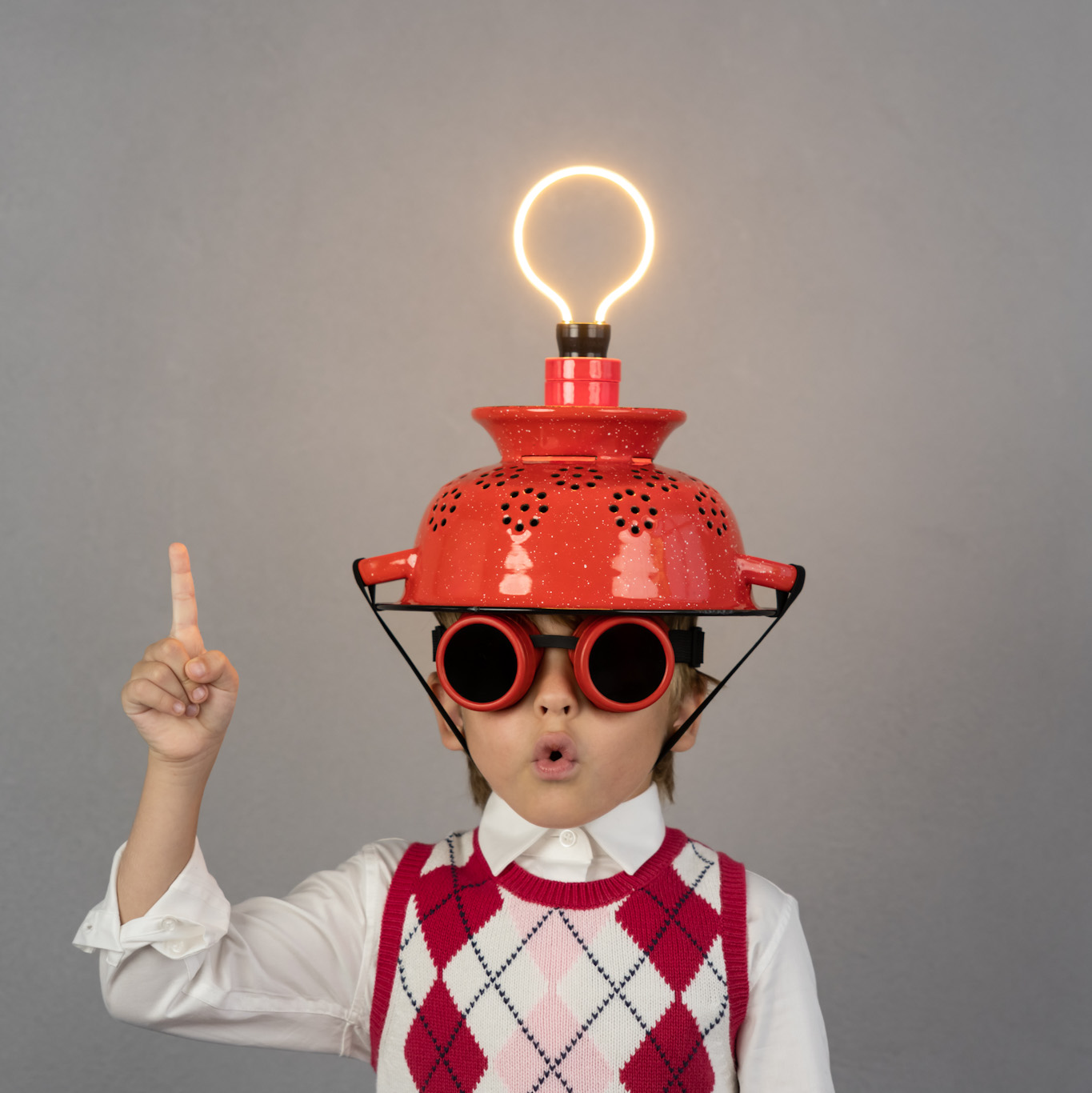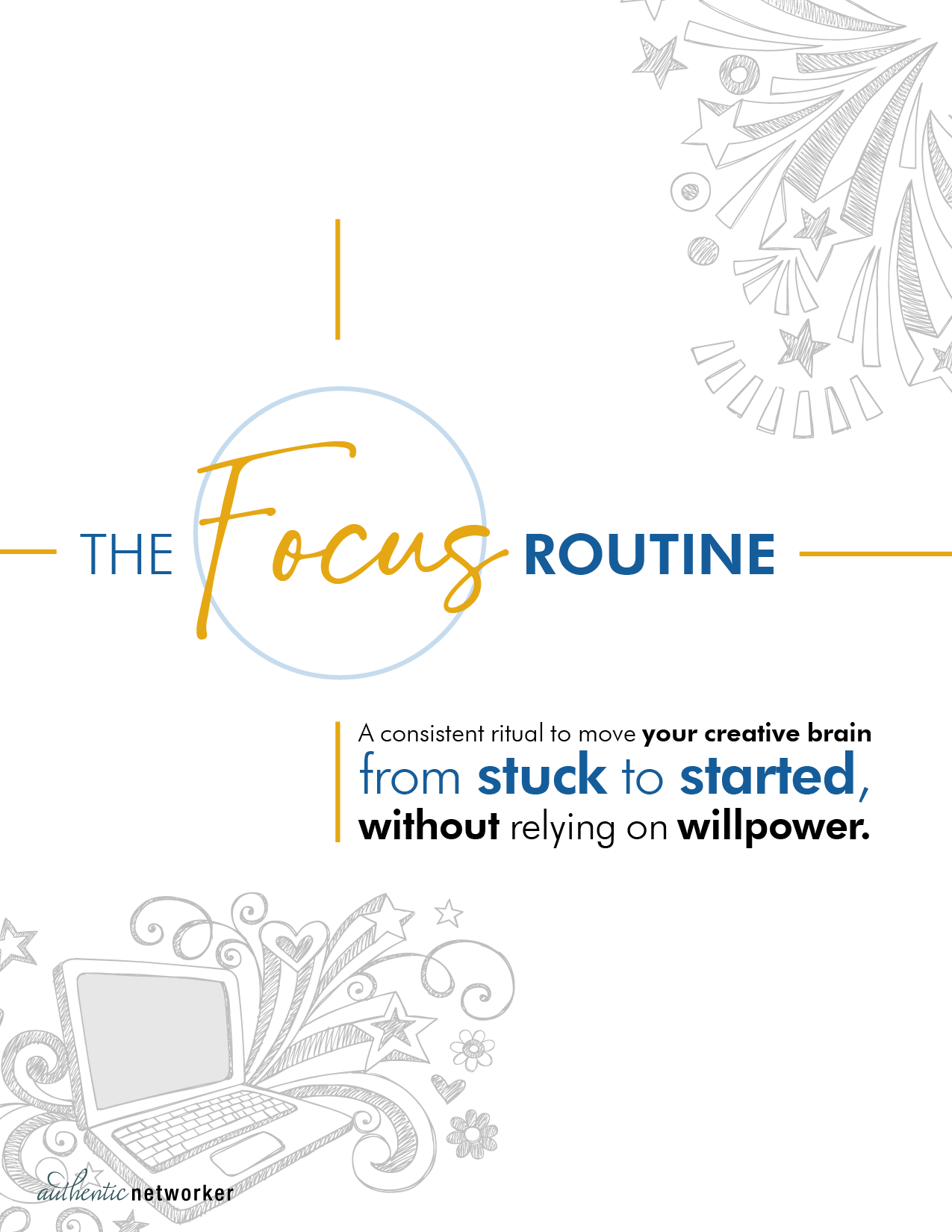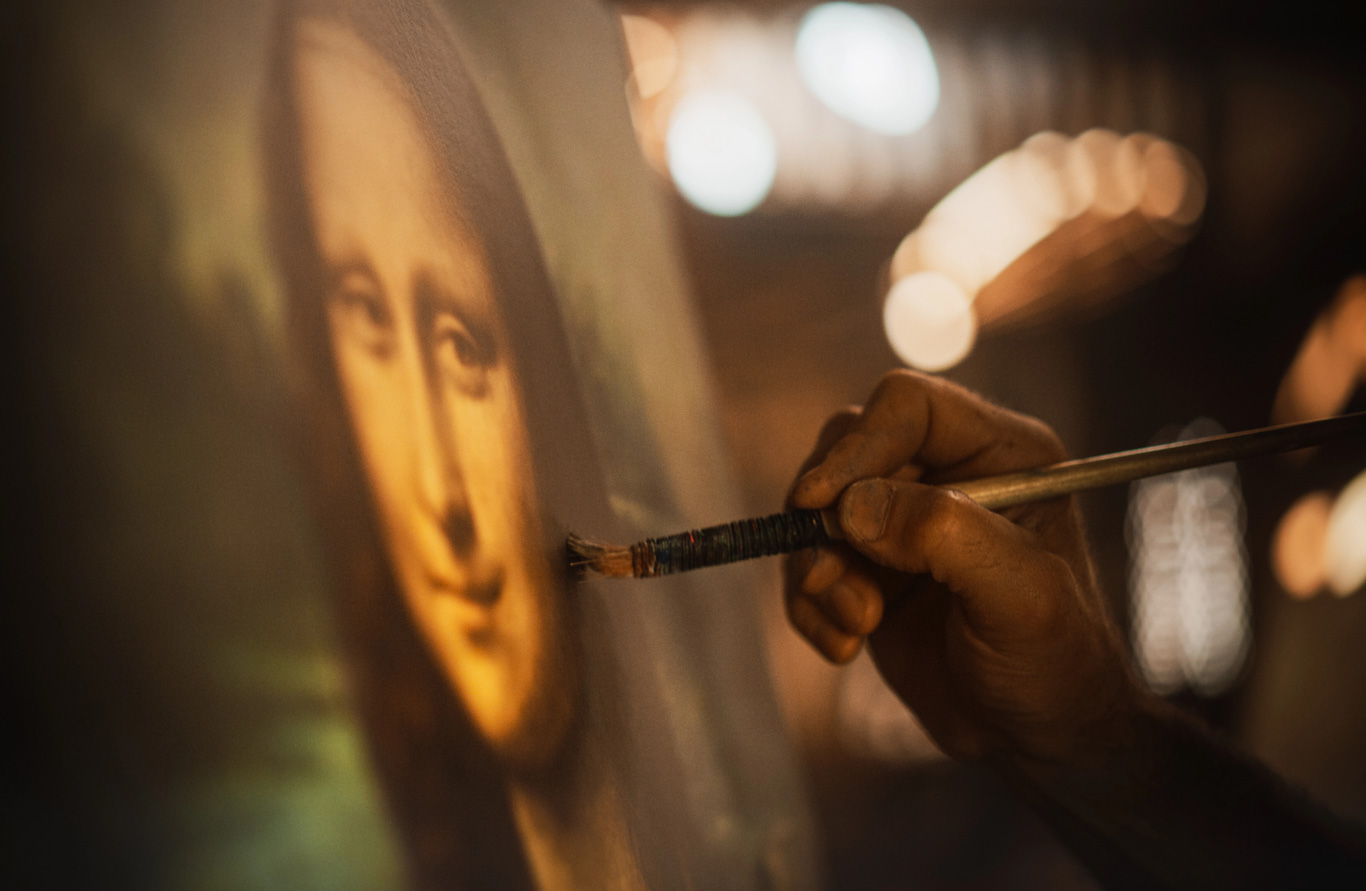Permission to Tinker: Playful, ADHD-Friendly Ways to Build Momentum


Ever put pressure on yourself to nail brilliant work on the first try?
This episode explores the science (and relief) of starting with play.
Ever put pressure on yourself to nail brilliant work on the first try?
This episode explores the science (and relief) of starting with play.
Ever get everything set up perfectly—coffee made, phone silenced, workspace cleared—only to freeze the moment you face the blank page? This episode is for the solopreneurs with ADHD , neurodivergent creatives , and executive-function warriors who’ve done everything right to begin… and then feel like a deer in the productivity headlights .
Mia shares how a tiny act of low-stakes tinkering helped her move past perfectionism , dodge procrastination , and finally get started —plus what science says about why playful entry points matter. You’ll hear how the Progress Principle fuels motivation, why small wins beat big plans , and how five minutes of font-fiddling might be your most powerful focus strategy yet.
This one’s loaded with simple getting started rituals , body doubling energy , and solopreneur productivity tools that actually work with your brain, not against it.
---------------
Stuck in perfectionism or executive function limbo? 🫠
Download my free Focus Routine—a simple, ADHD-friendly way to break through procrastination and build momentum one small win at a time.
👉 authenticnetworker.com/focusroutine
---------------
Work better with other brilliant weirdos. 🤓
Wavelength is ADHD-friendly virtual coworking for solopreneurs who thrive on body doubling, structure, and tiny wins. Also: best. community. ever.
👉 authenticnetworker.com/wavelength
-------------
🔗 Links for Your Brain’s Additional Enjoyment
(Look up only when you are definitely not procrastinating. lol I see you. It's actually possible I am you.)
📘 The Progress Principle
Amabile, T. M., & Kramer, S. J. (2011). Using Small Wins to Ignite Joy, Engagement, and Creativity at Work . Harvard Business Review Press.
🧠 Wired to Create
Kaufman, S. B., & Gregoire, C. (2015). Unraveling the Mysteries of the Creative Mind . Perigee Books.
😂 Papyrus Sketch – SNL
Because Ryan Gosling lost sleep over a font, and honestly? Same.
-------------
Episode Keywords: how to stop procrastinating, ADHD productivity tips, playful productivity strategies, how to start when you're stuck, solopreneur focus tools, body doubling for productivity, ADHD-friendly rituals, executive function support, getting started with ADHD, perfectionism and procrastination, productivity hacks for creatives, low-stakes momentum strategies, small wins motivation, the progress principle, font fiddling productivity, how to overcome creative paralysis, momentum for neurodivergent entrepreneurs, tiny habits for focus, solopreneur ADHD workflow, starting rituals that work, how to beat the blank page
Have you ever had a moment when you finally cleared all your distractions and then your brain immediately demanded a masterpiece? Today we're talking about the hidden pressure of the blank page, and how creating a safe space to play could level up your creativity game.
Three, two, one.
3, 2, 1. Let's go. Welcome to Transition Space, your gateway from thinking to doing. I'm Mia Torr. If you're called to create meaningful work, use this podcast as part of your starting ritual. Make your coffee and clear your desk while you listen, and we'll hang out as you ease into focused flow. While you create your space, I'll help you entertain the transition. Come on in.
Today on Transition Space, a story about that moment when the distractions are gone, the conditions are perfect, and suddenly it's just you and your own expectations.
It was one of those suspiciously functional work days when the universe cooperated like a sweet child on Christmas morning. My kids were out, my coffee was strong, and my Shakespearean insult mug was petty.
My desk looked like I respected myself. Even the to-do list had a satisfying little time block marked deep work. My baby Yoda figurine got his ceremonial belly rubber. The vibes were immaculate. That was it. Conditions were perfect. I was absurdly prepared.
So I sat down, fingers hovering above the keyboard, ready for takeoff. And that's when it hit me. Oh, sh*t. I've removed every distraction. Now I actually have to perform.
The pressure suddenly hit me to write something good. It was like trying to be Hemingway before you've had your coffee. Spoiler alert: even Hemingway wasn't Hemingway before coffee.
Clearing away distractions left me alone with my own impossible standards. It's like creating the perfect stage and then realizing you've accidentally booked Carnegie Hall for your first piano recital.
Think about it. Even Olympic athletes don't start their training sessions with record attempts. They warm up, they play. They ease into dedicated practice. But somehow we expect our creativity to nail the dismount on the first try.
I discovered this by accident one day when the pressure of the blank page was especially crushing my soul. I made myself one rule. I could play around all I wanted, but only within my work document. No escaping to YouTube. Absolutely no Reddit rabbit holes. Just me and this page getting to know each other.
I told myself I wasn't allowed to procrastinate externally, but I could tinker within my project if that helped me get started. Instead of my usual daring feat of trying to write the perfect first sentence, I started just tinkering with the font. Not because it mattered, not because it would make the work better, but it gave my perfectionist brain something to focus on besides my own expectations.
And then something interesting unfolded. At first, I was just sitting there muttering to myself about the baffling survival of Comic Sans in the modern world. And then I started laughing to myself because I remembered that Ryan Gosling Saturday Night Live sketch about papyrus, which you should check out if you're not procrastinating. And then, of course, I had to actively resist the urge to go watch it again on YouTube.
You get the picture? There I was, tinkering away, being a total font snob. And so slowly I didn't realize it at first, things started to flow into work mode.
Changing the header font made me think about my writing structure. Playing with margins got me considering flow. Each tiny adjustment was like placing a stepping stone across the blank page.
My desire to work started sneaking in through the side door. No pressure, no performance anxiety, just my brain quietly gaining momentum while I played typography vigilante.
Every small decision, even should this subheading be bold?, was actually moving me forward. Not away from the work, but into it. Through that side door where the pressure couldn't find me.
These days, when I recognize that familiar pressure after clearing my space, I have to remind myself that creating the right conditions doesn't mean I need to set the stage for immediate perfection. It's about creating a safe space to land, to play, to begin.
A few researchers at Harvard got curious about what actually fuels momentum, the kind that keeps you going long after the caffeine runs out. So they did something beautifully tedious. They asked hundreds of professionals to keep daily work diaries, real entries from real jobs, and real people just trying to meet a deadline without imploding. Researchers cracked open these diaries, and unlike in middle school, they actually found something useful. Micro-progress.
The days people reported feeling the most lit up weren't the days they crossed the big finish lines. They were the days of moving forward just a little. When they wrote a headline, solved a nagging issue, had one decent idea that tiny movement generated a disproportionate amount of satisfaction. Their brains were throwing parties for the smallest wins.
They called it the Progress Principle. The idea that forward motion, no matter how minuscule, creates momentum. Tiny edits, minor adjustments, one decisive sentence. That's the spark, that's the fuel. The magic lives in the movement.
Later on, another crew of researchers looked at creative pros and how they begin. Turns out the launch sequence often starts sideways. They saw writers renaming chapters just to see how they looked in bold. Designers fiddled with layouts before they had a concept. One guy made a playlist for a book he hadn't even pitched yet.
These seeming distractions were actually rituals in disguise. Low-stakes actions that gently ushered the brain toward flow.
To sum it up, people who give themselves permission to tinker get sh*t done.
They start by alphabetizing their chapter titles or designing the perfect email signature for that future TED Talk invitation. They pave the way for ideas that don't exist yet. And you know what? It works. These tiny moments of play actually lead to breakthrough ideas and finished projects.
Sometimes the gentlest entry point is the most powerful. The smallest permission to play can unlock the biggest, biggest breakthroughs.
So I say, go ahead. Grant yourself full creative license. Ditch the pressure. Lower the stakes. Start tiny. Have fun. Be weird. That's where the alchemy lives.
Just don't use Comic Sans.
Whether you're making coffee or arranging your desk right now, ask yourself, what could your first five minutes of tinkering look like? How might you play your way into flow? I'd love to hear your answer. Visit authenticnetworker.com/transitionspace, and while you're there, tell me your favorite font.
This is Transition Space, where you clear your path from thinking to doing. I'm Mia, and together we've shaped what's possible. Now it's your turn to make it real.



